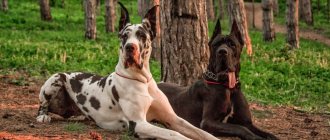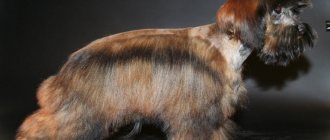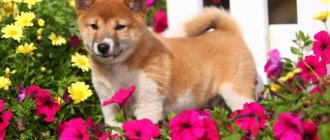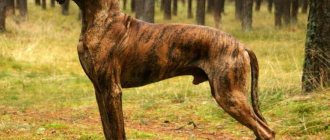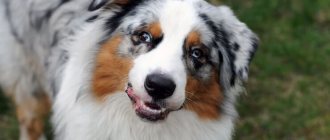The largest breeds for home breeding
Of course, every farmer focused on producing meat pays attention primarily to heavyweight breeds. But there is an important point: do not forget to take into account precocity. For some, it is more profitable to get a bird weighing 5 kg in 4–5 months than a bird weighing 10 kg in a year and a half. In this article we will look at the largest breeds of geese. You can decide which qualities - overall weight, unpretentiousness or speed of weight gain - are more beneficial for you.
Toulouse goose
These geese, according to experts, are the largest breed of geese. Toulouse geese grow very quickly: already in 50–60 days, geese gain weight of 6 kg, and by the year males can weigh 10 kg. These poultry produce tender and very fatty meat. Another advantage is the tasty and large liver, up to 1 kg. Already at 2 months, the chicks form 1–2 fat folds on their abdomen, and a “wallet” (double chin) begins to form under the beak.
An adult goose has a large, wide head and a heavy, powerful, rounded body. The belly is large, the chest is wide, the neck is thick and short. Males weigh up to 11–12 kg, females – 7–10 kg. The plumage is usually gray, the beak is orange.
Such geese are also called “Christmas” - they are very popular in European cities, and they are the ones most often chosen to be served on the Christmas table.
Females lay about 40 eggs per year (approximately 180–200 g each), they have low fertility. Often, “Toulouses” are crossed to produce large offspring and, at the same time, offspring with good immunity.
Such birds are excellent for commercial breeding - you can make a profit from birds as young as two months old. In addition, these birds are inactive and quickly gain weight, including in poultry farms. True, they digest roughage worse than other breeds. Poorly adapted to grazing; cold and high humidity can harm them.
In the goose barn you need to maintain a temperature of 20 degrees Celsius, and carefully monitor that there are no drafts. It is necessary to have fresh and clean bedding: for this purpose you can use hay or sawdust, but sphagnum moss is best, since it has good moisture-absorbing qualities.
It must be borne in mind that they begin to gain weight especially quickly at two months, and at this time they cannot be limited in the amount of food. In addition to greens and regular grain mixtures, it is advisable to add pure oats at this time - this will contribute to the special tenderness of the meat. The diet also needs succulent food, wheat, corn, and worms. Feeding twice a day can increase profitability, and these birds eat more at night than during the day.
Kholmogory goose
One of the oldest breeds - mentions of them can be found since 1885. The Kholmogory goose can be recognized by its characteristic growth on its forehead near its beak. Adult males of this breed are very large, reaching a weight of up to 8–10 kg, females - 7 kg. The color can be piebald or white. The majestic Kholmogory goose has a wide convex chest, and there are characteristic folds on the belly.
An important advantage of the breed: endurance, good adaptation to new conditions and relative unpretentiousness to both food and living conditions. Thanks to this, in Russia they can be bred in almost all regions, including those with a rather harsh climate. This breed is quite resistant to disease. Thanks to their calm nature, Kholmogors live peacefully in large herds.
This breed produces tasty and healthy meat with dietary qualities.
Geese do not produce many eggs - up to 40 per year, but with the right approach this number can be doubled, and females have excellent maternal instinct. Among other heavy species of geese, Kholmogory geese are long-lived - they can live 15–20 years (compared to 4–6 years for others), which is important for breeders of breeding birds. True, they also reach puberty later – only after three years.
At the moment there are two lines of this breed: some with short beaks, others with long beaks. The first are descendants crossed with wild gray geese, the second - with the Tula breed.
For such birds, you will need a clean and dry goose coop with warm straw bedding. There should be no drafts in the room, but it should be well ventilated. Each bird should have at least 1 sq. m. Also, this breed needs free range, very preferably with access to a pond, and they can walk and swim in winter.
In addition to standard feed, these geese can be given premixes and cabbage. Mineral fertilizing won't hurt either: you can leave containers with dry clay, sand and chalk. This will provide birds with good digestion and eggs with a strong shell.
It is best to give succulent food in the morning and evening, and grain at night. You can leave food in reserve, since the peak of hunger occurs at dawn.
Gorky goose
Adult Gorky ganders reach 7–10 kg, geese – 6–8 kg. This breed of large geese ranks third in size. Eggs are smaller than other breeds (130–150 g), but the average egg production is slightly higher - 60 eggs per year; hatching of goslings is 70–80%.
Most often these are white, gray or gray birds with a wide back, a small growth on the forehead and a pronounced goiter. The tail is raised.
The advantages of the breed include very rapid development and gain of muscle mass: in just 2 months, goslings usually gain 3 kg or more. Puberty occurs at 6.5 months. This breed is recommended for those who are focused on quick results: although the weight is less than that of the leaders, the breed is very profitable due to the speed of weight gain, as well as good indicators of the brood of goslings if you plan to breed them for sale. In addition to meat, the down of Gorky geese is also highly valued.
True, it is better for novice farmers to purchase birds from trusted nurseries - on the market, unscrupulous sellers can sell a Chinese goose together with a Gorky goose (you can distinguish it by its protruding body).
The breed is disease resistant and has good immunity. It has a peaceful disposition and gets along well with other domestic animals.
Gorkovsky
Geese were the result of crossing Chinese and Solnechnogorsk birds. They grow quite quickly, have an original bump on their forehead and have disease-resistant immunity.
The weight of an adult for slaughter is 8-9 kilograms. Large industrial farmers love to breed poultry, as the young quickly gain weight. The meat tastes juicy, tender, with a pleasant aroma.
Young Gorky goose are easy to find at any poultry market. Beware of deceivers. When purchasing, pay attention to the weight and posture of the birds. In a real Gorky breed, the body does not protrude much forward, and the weight varies from 2 to 3 kg.
200 days after birth, the goose lays eggs. During the year their number exceeds 50 pieces. The eggs are large, weigh 160 grams, and have a unique taste.
The bird gets along well with other breeds, so it is profitable to breed it in a private yard.
The largest goose in the world
So, the largest geese among domestic geese are Toulouse; although the average weight of males ranges from 11–12 kg, with proper care, individual specimens gain 14–16 kg! Moreover, in addition to the weight of the overall body, they are also famous for their special large delicacy liver. Therefore, if the most important indicator for you is the maximum weight and size of the bird, we recommend choosing this breed.
Of the wild geese, the largest geese in the world are the bean goose: their weight reaches 4.5–5 kg, length 90 cm, and wingspan 190 cm.
What breeds of geese are best to breed at home?
If you are interested in this, then you have a personal plot on which you can keep them. And if so, then having geese on it is the right choice. Why?
Because geese are the largest domestic birds after turkeys. Respectively
- their carcass has a large yield of meat. Especially in meat breeds of geese: Kholmogory, Tula, Shadrinsky, Arzamas;
- if you get Toulouse geese, you can fatten them to obtain a French delicacy - foie gras goose liver;
- All geese are waterfowl, which means that their feathers and down differ better from chicken feathers. In terms of thermal conductivity and waterproofing properties, it almost corresponds to eider. They can be plucked during life. You can read about methods for plucking geese in the article at the link.
Breeding Features
They are somewhat noisy. Therefore, if you or your neighbors do not like this feature of theirs, then it is better to abandon them in favor of indo-ducks - they are more silent. But, of course, the benefit from maintaining them is much lower.
Geese are unpretentious and are not afraid of frost. Some poultry farmers even keep gray geese outside in the winter without providing them with water troughs for bathing, but they still grow large and quickly gain weight. But still, there is no point in creating extreme conditions on purpose. It is better to take care of the maximum comfort of the birds.
Geese live on average about six years. Therefore, the formation of a breeding herd must be treated very carefully. Keep only those individuals that have the best physical characteristics and are more consistent with the breed. Otherwise, you will get crossbred geese that are much inferior in their productive indicators to purebred ones. In a herd there should be three or four females per male.
After four years of age, it is better to change the gander and purchase a new manufacturer. Geese begin laying eggs when they reach eight months of age. They reach their peak productivity by the age of two, and then egg production declines. Geese hatch eggs or incubate them for 22 days. After this period, goslings are born.
The advantages of breeding geese include the fact that they grow intensively. This allows you to organize broiler housing, that is, raise them up to two months of age. By this time they will have gained about three and a half kilograms of weight. After this time, it is not profitable to keep them, as molting will begin and the quality of the carcass will deteriorate.
Origin history and exterior
Geese were the first of all birds to be domesticated. They have long lived next to humans and are mentioned in the folklore of many countries in their fairy tales and songs. The ancestors of domestic waterfowl were their wild relatives, greylag geese. Only the Chinese breed came from the dry-nosed goose. But the domestication process is not finished yet. In Central Asia, they practice catching wild goslings and then raising them in households.
All breeds are characterized by the following exterior:
- Long neck.
- Rook-like body.
- Flipper-shaped feet for swimming.
- A beak with characteristic features depending on the species.
- Varied plumage. From monochromatic to variegated.
The breeders have done a lot of work. Many breeds of different directions have been developed. There are those considered meat. This
Increased vitality, adaptability to adverse conditions and at the same time distinguished by greater weight are:
To obtain the lightest fluff and high-quality feathers, it is better to breed
If you raise poultry for goose liver, it is better to choose the following breeds:
The fastest growing bird breeds are
- Italian,
- Large gray ones
- Kuban,
- Gorkovsky.
As you can see, there is plenty to choose from. The main thing is to decide for yourself what is more important to you - meat or high-quality down; the vitality of the bird or its precocity. There are breeds that meet several requirements at the same time. It might be worth choosing them.
Geese breeds
Kubanskaya, Linda, Kholmogorskaya, Large sulfur, Legart can be found here. We will look at the Arzamas, Gorky, Chinese, Rhine and Toulouse breeds of geese.
Arzamas
The name of the breed is associated with the city of Arzamas. It was bred there and has been grown there for a long time. They were originally bred as fighting geese. There is information that goose fights captured the imagination of Catherine II herself when she visited this southern city in 1767. So the fights took place precisely between the Arzamas geese.
- The forehead is large, the occipital part of the head is round.
- The cheeks are clearly defined.
- The beak is distinguished by a variety of shapes: spoon-nosed, steep-nosed and even ordinary - straight.
- Wings of considerable size.
- Flat back.
- The color of the tightly fitting feathers is white.
Arzamas people are hardy, they are not afraid of cold winters. They love to graze in meadows. Therefore, they are economical in maintenance. With good fattening, they quickly gain weight. By the age of two months it is almost three and a half kilograms. An adult goose weighs about six kilograms, and a goose is half a kilo less.
The weight of one egg is 170 grams. They can lay 20 eggs per season. The hen instinct is well developed. Survival rate of young animals is 96%.
Gorky
This breed is young. Bred in the middle of the last century by Gorky breeders. It was bred by geese for egg and meat production - Chinese and Kholmogory.
Fast growing breed. By the age of two months they weigh about three and a half kilograms. An adult goose weighs 8 kilograms, and a goose is one kilogram less. The weight of one egg is 150 grams. More than 50 eggs can be laid during a season.
- Outwardly similar to Kholmogorov.
- The birds are large.
- The body protrudes forward.
- Under the beak there is a purse (small pouch).
- The color of the plumage is either white or light gray.
They almost never get sick because they have good immunity. The survival rate of offspring is almost one hundred percent. Good hens.
Chinese
Representatives of this breed come from the Asian continent. Only in the 18th century did they find themselves in Europe. The Europeans called them Chinese.
Chinese breed geese are slender and stately birds.
- Horizontal body.
- The neck is elongated.
- There is a lump-growth near the forehead.
- The beak and cone are dark in color, ending in a contrasting bright white stripe.
- Feathers are variegated.
- Wallet (leather bag) - not always the case.
The Chinese can be considered a breed of the egg direction. During the season they lay up to 70 eggs. The weight of one egg is about 115 grams. But their hen instinct is not expressed. Their meat has a delicate taste and low fat content.
Rhineland
The breed was bred in Germany. They are also called Germanic. It came to us from Hungary only in 1969.
This is a meat breed. An adult goose weighs up to seven kilograms, and a goose weighs a kilogram less. They are often grown for their delicious fatty liver. Its weight can reach 400 grams.
- The head is medium.
- The back is flat.
- The body has rounded outlines.
- The tail is small, like an extension of the back.
- The beak is orange, the eyes are blue.
- The feathers are dense and white.
Egg production is low. During the season they will lay a little more than 40 large eggs - 170 grams per egg. The shell is white. Hatchability of goslings is 70%. The incubation instinct is not developed.
Toulouse geese
Toulouse goose meat has a high taste quality; restaurants make masterpieces from it. And the liver is used to prepare an expensive delicacy - foie gras.
The goose is large, with a short thick neck. The medium-sized head with a leather “pocket” under the beak makes the bird look slightly awkward. Paws that stand too wide add to the absurdity. The plumage of the Toulouse breed is gray-brown, the chest and underbody are white. The exterior of the bird is described in detail in the article “About Toulouse geese: description of the breed.”
The largest goose of the Toulouse breed gains up to 11-12 kilograms in 8-9 months. The chicks also grow quickly: 40-50 days are enough for them to grow up to 6 kilograms.
In one year, a goose lays an average of 35 eggs. The eggs are large, weighing 200 grams each. Like meat, they have excellent taste.
Breeding Toulouse poultry is suitable for both selling meat and eggs.
Among the shortcomings, we note that it is very rare to see a breeding representative of the breed at bird fairs, and even more so at markets. Advantages: birds are easy to care for and easily adapt to weather conditions.
Geese of the Kholmogory breed
The bird appeared in home yards back in 1885 and is still in high demand. Kholmogory is a popular type of meat geese, as their meat is tender, juicy and dietary.
Geese are large, strong in build, distinguished by an elongated neck and a wide chest. The beak is bright, orange, with a characteristic bump on the forehead. The plumage of adult ganders comes in two shades: gray and white. In grays, the growth above the beak is orange, and in whites it is dark brown. For detailed information about the exterior of the birds, read the article “Description of the Kholmogory geese breed.”
In the first three months, the chicks gain weight up to 5 kilograms. A goose grown in a year weighs about 12 kilograms, a goose weighs 8-9. Therefore, the bird deserves the status of the largest goose.
The convenience of breeding the Kholmogory breed is that the birds are friendly towards other types of domestic birds.
The female lays 30 eggs per year. The hen is distinguished by a high maternal instinct, but this also has its drawback. Often the goose crushes the future goslings with its weight.
Breeding the Kholmogory breed is a profitable business. The goose feeds on standard feed, and in the summer, if there is vegetation and a body of water on the site, it is able to obtain food on its own.
Large gray geese
The large gray bird appeared as a result of careful selection of Toulouse and Romain birds. It is divided into two subspecies: Borkovsky Ukrainian and Tambov steppe.
Breeding methods have led to the fact that modern gray geese have high productive qualities. The meat is juicy and tender in taste, thanks to a good fat layer. In two months of life, domestic geese gain 5 kilograms. By the time of slaughter, individuals weigh 8-9.5 kilograms.
The breed has a high egg production. In one year, the goose lays up to 40 eggs, each of which weighs 150-200 grams. Due to their exquisite taste, eggs are often sold along with meat.
The wide and short neck supports the large head. The bird's beak is orange and the end is light pink. The body is large, dense, there are two folds of skin on the stomach. The chest is wide, the wings fit the body.
The color of the gray goose's plumage corresponds to its name. The neck and body are dark, and the chest and edges of the wings are decorated with a white stripe.
Detailed information about external data can be found in the article “Large gray geese: characteristics and description of the breed.”
The disadvantage of breeding the gray large breed is the low survival rate of offspring. Of the entire clutch, 65-80% reach slaughter. This causes a lot of trouble for the farmer. You have to monitor the chicks around the clock and provide them with proper care.
Emden breed
This largest breed of geese has been considered a model of meat productivity for many years. Wide legs, a large body and head, and a fleshy neck make the bird squat and powerful. There is a fold of fat on the belly, and a small sac under the beak at the base.
Emden ganders are gray in color, geese are white. Short beak orange color. The breed was bred in Germany, in the city of the same name Emden.
The largest drakes grow up to 10 kilograms, geese - up to 8. Due to the presence of a good fat layer, the meat is juicy, tender, and has a good aroma.
Geese of the Emden breed lay up to 35 eggs per year. Raising poultry in a private yard is a profitable business, as the survival rate of offspring reaches 99%. Small chicks gain about 4 kilograms in the first two months of life.
The advantages of raising poultry include its unpretentiousness, good adaptability to any conditions, and high immunity.
Tula bird
Domestic geese of the Tula breed were bred in the 17th century at the whim of merchants. The bird was originally used for cockfighting. But over time, farmers began to pay attention to the high productivity, ease of care and quick adaptation of these birds.
Compared to other waterfowl, the Tula breed is defined by a characteristic hump above its beak.
The female lays only 25 eggs per year. When breeding the breed, you should not worry about the survival of the chicks. Mother goose carefully monitors and cares for the babies in the first months of life. The survival rate of offspring reaches 96%.
The advantages of the bird lie not only in its high maternal instinct. At bird markets, an adult can be bought for only 3 thousand rubles. In just four months, the gander gains about 6 kilograms, the goose - 5. In some cases, these figures can reach 9 and 8 kilograms, respectively.
When fattening a bird, it is important to monitor its diet. A large amount of vitamins and minerals are added to the food so that the Tula breed geese feel good. In the article “About Tula Geese” you will find detailed instructions on the contents: what kind of food to use and how to care for the bird.
The best breeds of geese for home breeding and personal farming
Kholmogory goose
The Kholmogory breed is used exclusively for economic purposes. Not practical. It is bred exclusively for decorative purposes because it is expensive to maintain due to the difficulty of breeding.
Puberty occurs at the age of 3 years, life expectancy reaches 17 years.
Disadvantages include: low productivity (10-15 eggs per year) and survival rate of offspring (up to 50%), although this makes the bird more valuable.
The Kholmogory breed does not differ in productivity and survival of offspring
Large Ukrainian gray
Ukrainian gray or as they are also called large gray. This is a young breed, with a large gray body and brightly colored beak and feet. It is one of the most preferred among farmers. They fatten quickly, are unpretentious in care and food, fertile and in good health.
Within the breed, they are divided into:
The adult species gains up to 7 and sometimes up to 9 kg of live weight, and females can lay up to 60 eggs per year, the egg hatchability is about 70%, which is good. This is an excellent bird for fattening fatty liver.
Ukrainian gray gains up to 9 kg of weight
Toulouse
The Toulouse bird has French roots. The weight of a black Toulouse reaches 12 kg, a goose up to 7 kg of live weight. The liver is also in demand; the weight of one copy reaches 500 grams.
It is famous for its high growth rates, good weight gain, and unpretentiousness to feed. Toulouse also has good indicators of gaining fat reserves and fluff.
Disadvantages: sensitivity to temperature changes, drafts, high humidity and virtually no maternal instinct.
Toulouse geese are sensitive to weather changes
Italian white
The Italian White arrived in the USSR in the 70s from Czechoslovakia, where it came from sunny Italy. Despite the warm climate familiar to this bird, they have perfectly adapted to our weather conditions. Blue-eyed with snow-white plumage, a bright orange beak and paws.
The size and shape of the body, the length of the neck, wings and tail - everything is harmoniously built, the average size does not allow this breed to be classified as either large or small, this is the golden mean in a snow-white design.
By 2 months he gains about 4 kg. It's time to sell it for meat. Adults weigh about 6 kg. Perfect for smoking, as this bird does not tend to accumulate excess fat.
Egg production is 45-50 eggs per year, but up to 90 eggs can be collected, since the breed quickly reaches sexual maturity and begins to lay eggs early, eggs can be collected twice in a year.
Productive age up to 5 years.
Disadvantages: there is absolutely no maternal instinct; without an incubator it is unlikely that it will be possible to raise this breed.
Italian geese do not have maternal instincts
Leghart Danish
The main purpose of breeding is fluff. In a year it can produce up to 500 grams of fluff. Starting from the age of one and repeat the procedure every month and a half.
Legard is an affectionate and sensitive bird, loves warmth and stability in care, the diet is monotonous throughout the year, as well as the temperature regime.
Disadvantages: low egg production rates, poor offspring survival rate, need for incubation rearing.
Legart geese love warmth and stability in care
Governor's geese
The breed is quite fresh. They were bred by crossing Shadrinskaya and Italian birds. The weight of an adult male is 4-5 kg; the female lays about 45 eggs per year. Good hatchability and survival rate (more than 95%).
The species has good characteristics both in egg production and meat quality.
Governor's geese have good survival rates
Chinese geese
One of the breeds that is bred for eggs. One female lays up to 100 eggs per year, which is not much less than a chicken. The quality of the meat is highly valued, but keeping it for meat is not profitable, since the weight of an adult male is only 4-5 kg.
Disadvantages: not particularly developed maternal instinct. And increased aggression during egg laying. The tribe should be monitored more closely.
Mamut
The breed was brought from Denmark. The weight of an adult female is up to 9 kg, and the male is more than 13 kg. High egg production for birds - about 50 eggs, good survival and viability of offspring - up to 82%.
But weak maternal instinct. The absence of a body of water is difficult to bear.
Goose Mamut has a hard time with the lack of a body of water
Ural whites
The breed has excellent immunity, tolerance to various weather and climatic conditions, and consistently transmits selective qualities to its offspring.
During the year, the female carries about 50 eggs, the hatching percentage is more than 80%, the survival rate of the brood is very high, up to 95%. The weight of Ural Whites is not large, adult individuals reach a weight of 5-6 kg.
Ural white geese lay about 50 eggs per year
Shadrinsky
The Shabrin bird is not a pampered bird. However, floors should be kept dry and warm. Comfortable temperature for this species is around 18 degrees.
An adult weighs about 6 kg, not much for a male, but the meat is of high quality and highly prized, making this bird attractive to breeders. Liver is also in good demand. The weight of the liver reaches 400 grams.
Shadrinsky goose is a meat breed
Tula bird
The weight of Tula geese is about 6 kg, their egg production is the lowest, so why are they valued? The fact is that this is the only fighting breed. Breeding it is not difficult, Tula birds can swim even in severe frosts, and the heat will not break them either. Like true fighters, they bravely endure all conditions, but they still have to watch their diet. Gaining excess weight threatens a fighter's loss of shape.
Description of the breed and productivity characteristics, advantages and disadvantages
The bird is divided into groups depending on weight:
- meat-fat (heavy);
- egg-laying (light);
- decorative (medium).
Kholmogory goose
It has a distinctive feature - a cone-shaped growth on the forehead of gray or orange color and a fold under the beak. Against the background of a long, strong back, a wide chest stands out.
In the central zone of Russia, by crossing the Chinese goose with the domestic white goose, an unpretentious bird was obtained that had strong immunity and was suitable for grazing. Regardless of weather conditions, it does not reduce its productivity.
Withstands severe frosts well.
In males, the maximum weight can be 12 kg, and in females - about 8 kg. Young goslings at 9 weeks weigh 4-5 kg. The Kholmogory goose lays 30 eggs per year with an average weight of 190 g and is a good brood hen. However, due to the large weight, the eggs under it sometimes get crushed.
Large Ukrainian gray
By crossing Romny geese with Toulouse geese, breeders obtained a Ukrainian gray bird that has:
- stocky build with a broad chest;
- double fold on the stomach;
- large head with orange beak;
- neck of medium length.
It is dark-colored from head to tail, and the belly is white. Belongs to the meat and fat group, the rate of weight gain is fast.
Female gray Ukrainian goose weigh about 6.5 kg, and males weigh up to 9.5 kg.
The average egg production can reach 60 eggs per year with an average weight of 170 grams. The hen gene is not lost in Ukrainian geese. They can hatch up to 15 goslings at a time.
These palmates are unpretentious in food and maintenance, unlike their Italian or Toulouse relatives, and are also not demanding on the presence of a reservoir. Suitable for obtaining fatty liver.
Legart Danish
The snow-white birds with blue eyes of the meat-eating group, which came from Denmark, are very friendly and attached to their owner. Legarts are sensitive to temperature and nutrition. Their body is elongated, there is a fat fold on the abdomen. The legs and beak are yellow.
The bird from Denmark is attractive to poultry farmers due to its fluff. At the age of 11-12 months, you can get about 500 g of fluff from one individual. Plucking can be repeated every 6 weeks.
Another advantage of legarts over other breeds is their consumption of 20% less feed than other meat-producing breeds. At 7-8 weeks the chick reaches a weight of 5-6 kg. With this diet, adult males weigh 7.5-8 kg, females - around 6-7 kg.
During the year, the goose lays about 40 eggs and does not have the instinct of a hen.
An incubator is used to produce Danish leghart offspring. Of all the eggs, only 60-65% of the chicks hatch. However, the survival rate of young animals reaches 90%.
The disadvantages of legarts include their nutrition during the growth period of young animals. Their diet must include daily vitamin supplements. Vaccination is also required.
Governor's geese
This young breed was bred in 2011. Shadrinsky and Italian geese were crossed. The result was a bird whose marbled meat is highly valued by chefs.
A goose lays an average of 50 eggs per year.
The body is compact with a wide, slightly protruding chest, the wing fits tightly to the body. There is no frontal bump on the head, and the beak and paws are bright orange. The plumage is snow-white; at a young age there may be gray patches that completely disappear by adulthood.
Governor's geese are not picky about their living conditions; a change of location has almost no effect on their productivity. During pasture walking, rapid weight gain occurs. Young goslings weigh about 4 kg at 2 months. An adult gander can weigh 9 kg, a female – 7-7.5 kg. They belong to the meat and fat group with valuable fluff.
If the housing conditions are met (4 geese per 1 gander), the fertilization rate reaches 90%. Governor females are good brood hens. One nest will be enough for 2-3 geese. The survival rate of chicks is very high - almost 99% with timely vaccination.
Disadvantages include:
- high feed absorption;
- low resistance to diseases.
Chinese geese
Crossing wild swan-nose with Indian and local gray geese produced a species with valuable and tasty meat, producing hundreds of eggs weighing 150 grams each per year. Growing for meat production is unprofitable, since adult individuals do not weigh more than 5 kg.
The white individual has an orange beak, the gray one has a brown beak. There is a knob-like growth on the head, the neck is long and curved, reminiscent of a swan. The body is elongated, with a raised rounded chest and a short tail. Gray individuals have a characteristic white stripe below from the beginning of the neck to the shoulder region.
Description of meat breeds of geese
- April 21, 2016
- in Gusi
- Alexey Viktorovich
I welcome everyone to the site! The topic of today's article is breeds of geese . Nowadays, beautiful, proud domestic geese have created an entire poultry industry. Now about 25 species of a wide variety of geese, each with their own characteristics, are successfully bred.
The main breeds of geese are of interest both for large poultry farms and for individual country farms. Before purchasing this or that breed of geese, of course, you need to familiarize yourself with the advantages and possible disadvantages of common breeds of geese.
There are three groups of geese:
- heavy or meaty
- medium or decorative
- lungs or egg-bearing
The type and breed of goslings are purchased depending on the result you want to get.
Kholmogory breed of geese
Kholmogory geese have become prominent representatives of the meat breed of geese . These are the largest representatives of the family, but are not often used for industrial breeding due to the high cost of hatching eggs.
The goose lays only 20 - 30 eggs. Most often, Kholmogory geese are residents of small farmsteads.
A distinctive feature of the breed is considered to be a growth on the forehead of an adult bird in the form of an orange bump in white geese and a dark color in gray geese.
Only Kholmogors wear a “purse” under their beak in the form of a peculiar fold, as well as two folds on their belly.
Adult Kholmogory geese
- reach more than 10 kilograms of weight
- unpretentious in maintenance, pasture is enough for them
- have good health
- cold resistant
- Geese have a maternal instinct and caring nature.
Along with this, when keeping Kholmogory geese, it is advisable to have a pond and avoid drafts in the room.
Kholmogory goose
The Kholmogory goose has a strong build, a wide chest and a long neck. The bird is distinguished by its curved beak and a special bump on its forehead. In white individuals it is orange, and in gray individuals it is dark. Under the beak there is a fold resembling a turkey's.
The goose is unpretentious to conditions and nutrition, quickly gains weight, and has strong immunity. The meat is juicy, appetizing, with an unsurpassed aroma. Geese have a strong maternal instinct, hatch their offspring well and care for ducklings. Males gain up to 12 kilograms of weight, females - up to 8. In nine weeks of life, chicks are able to gain up to 4.5 kilograms.
Breeding the Kholmogory breed is a profitable business, but it also has a number of disadvantages. With her weight, the mother hen often crushes the eggs, which barely reach 30 in a year. Also, breeders will have to take care of a pond, without which the bird will feel unwell.
Lindovsky breed of geese
Most often, geese of the Linda breed grow on poultry farms and country farms. They have white plumage and gain weight well. Linda geese lay up to 70 eggs per season.
This is the most optimal breed for industrial production of goose meat. In addition, it is the Lindovsky breed of geese that are most adapted to Russian weather conditions and tolerate all temperature changes well.
The breed was developed by crossing a breed of Chinese waterfowl geese and representatives of Russian Arzamas and Ladzher geese. Advantages of this most common breed of geese:
- disease resistant
- resistant to temperature changes
- gain weight quickly, twice as fast as European breeds
- reach 9 kilograms
- have a conflict-free and cheerful disposition
- high taste qualities of meat and liver are noted
- geese have high egg production, with 90 percent of eggs being fertilized when males are present
- hatched goslings have good survival rate
If the farm has a draft-free room with walking and running water, breeding the Lindovsky breed of geese will be the most optimal and highly profitable.
Meat breeds of geese
There are not so few geese that are bred for meat. The most famous:
- Large Ukrainian gray (large gray). This is one of the most beloved breeds among farmers, producing not only meat for smoking, but also fatty liver. An adult weighs up to 9 kg. Laying hens produce up to 60 eggs annually.
- Shadrinskaya. An adult weighs 5-6 kg. Although the figure is small, this variety is valued for its excellent-tasting meat and large liver (up to 400 g). The down of Shadrinsk geese is hard and therefore not valued.
- Kubanskaya. This is the result of crossing the Gorky, Emden, Chinese, and Kholmogory breeds. Geese produce up to 85 eggs weighing up to 160 g. The hatchability of the young generation reaches 90%. The weight of the gander is up to 6 kg. The meat is tasty and nutritious; it is dried and smoked.
- Governor's. This is a small bird, the male weighs up to 5 kg. It gained popularity due to the high quality of meat products. Females lay up to 45 eggs per year. This is an average figure, but the survival rate reaches 95%.
- Italian white. The breed was bred in Italy and brought to Russia in the 70s of the last century. Despite her native warm climate, the Italian has adapted well to the local climate. The bird has blue eyes and white plumage. The sizes are slightly larger than average. By the end of the second month of life, young animals gain 4 kg, adult males weigh up to 6 kg. The meat is used for smoking. The Italian white produces up to 90 eggs per year - egg laying can occur twice in a year.
Meat breeds of geese: 1 - Governor's, 2 - large gray, 3 - Kuban, 4 - Shadrinsk, 5 - Italian white
Gray - a large breed of geese
Gray - large geese
This breed is good because it has a strong instinct for hatching chicks, which means that the bird family will always be renewed. Hatched greylag geese chicks are very resilient and strong. In addition, they have an attractive appearance and a rare gray-green color.
Large gray geese are a decoration for any village yard:
- agile, with a proud gait
- have an excellent appetite, eat any type of food, are unpretentious
- gain weight well, reaching an average of 6 - 7 kilograms
- highly productive, the goose lays up to 50 eggs
- caring parents, both of them
- have healthy and viable offspring
To keep the breed of large gray geese, you need to comply with only a few conditions: good nutrition, dryness, cleanliness of the room, absence of drafts and approximately 1 square meter of area per individual.
Large gray breed of geese
Representatives of the breed of geese in question can be put on the same level as Toulouse, because the weight of males also reaches 11 kilograms. Farmers slaughter such geese after reaching a weight of 7-8 kilograms. Already at 2 months of age, the live weight of birds reaches 5 kilograms. Females are distinguished by high productivity rates, laying up to 60 eggs per year with an average weight of 200 grams.
Note! Young gray geese are quite sensitive to changes in living conditions, therefore, at the initial stage of development, the chicks require special care. After a month, the goslings are transferred to a normal diet.


